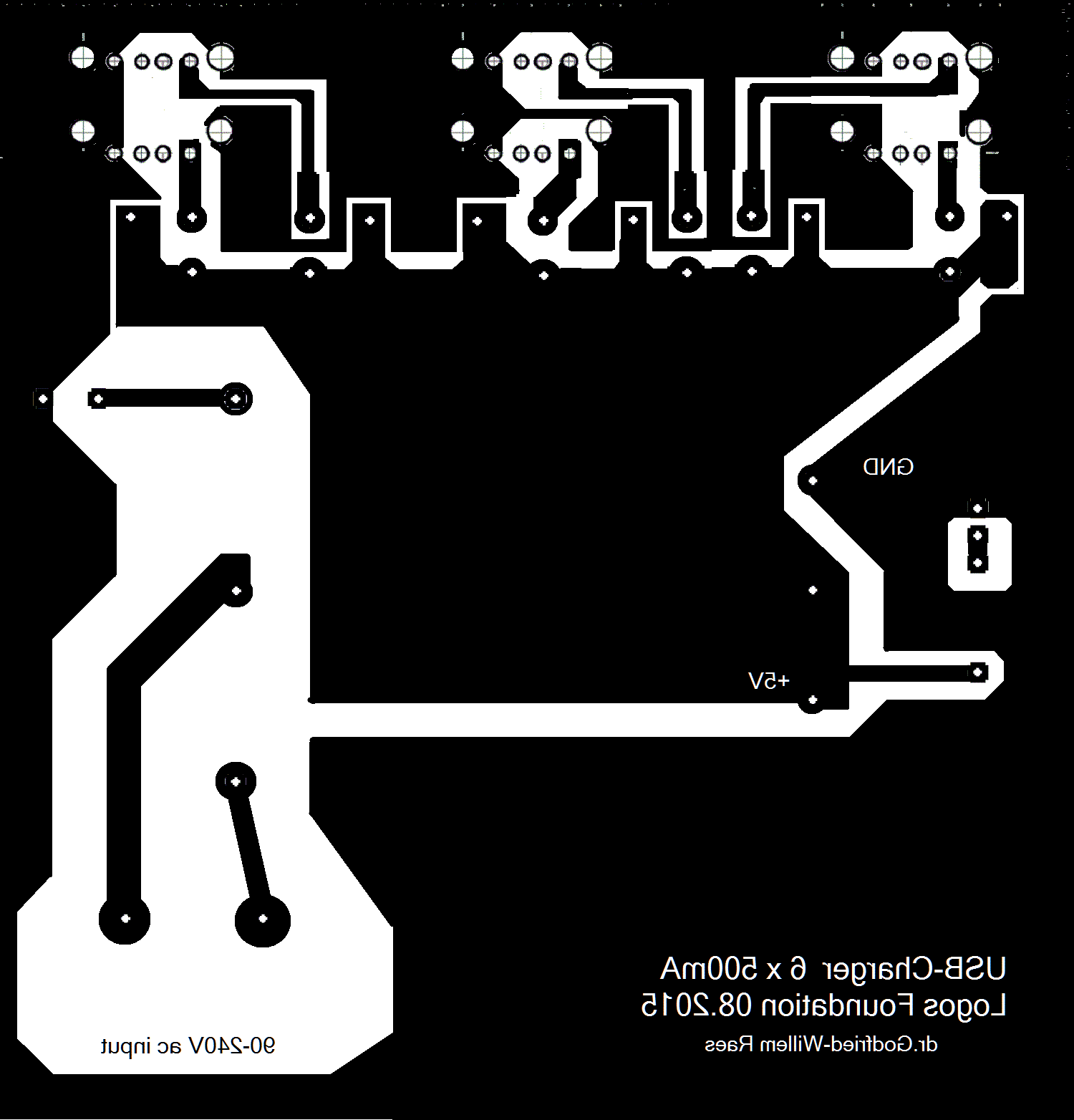A simple power source for USB-powered devices
More and more we encounter all sorts of devices that abuse computer USB ports as a mere power source. This is obviously due to the fact that the USB specification provides in support for USB powered devices whereby the voltage is 5V and the maximum current does not exceed 500mA. Although an abuse, one can hardly object to this practice if it is done using desktop and mains powered PC's. However, if USB port are used on a laptop, you are drawing all the power from its battery. The most absurd device we encountered recently was a battery charger for lithium cells powered from a laptop computer... That's just using the one battery to charge the other.
Confronted with a performer that needed six batteries to be charged -one by one- from a laptop for each performance on the road, we decided to build an ultmost simple circuit: merely six USB type A ports that can be used to power six such devices at the same time. Thus all batteries could be charged in a minimum of time and without sucking the laptop battery.
Here is a PCB layout for the mains powered device:
The circuit is so simple that we didn't even draw a circuit diagram.
Each port is equiped with a self resettable 550mA fuse. The three dual USB connectors (Amphenol, USB stacked 2.0 type A, 2 port, vertical. MUSBC51100) can be ordered from Farnell. (Order nr. 1860553). A modular switcher is used to convert the mains voltage (figure-8 connector) to 5V/ 3A. Due to the wide input voltage range (90 to 240V ac), the device can be used internationally on any mains power voltage. A white LED is used to indicate power on. The series resistor is 180 Ohms.
Godfried-Willem Raes
Ghent, august 18th 2015
to index-page Godfried-Willem Raes 

